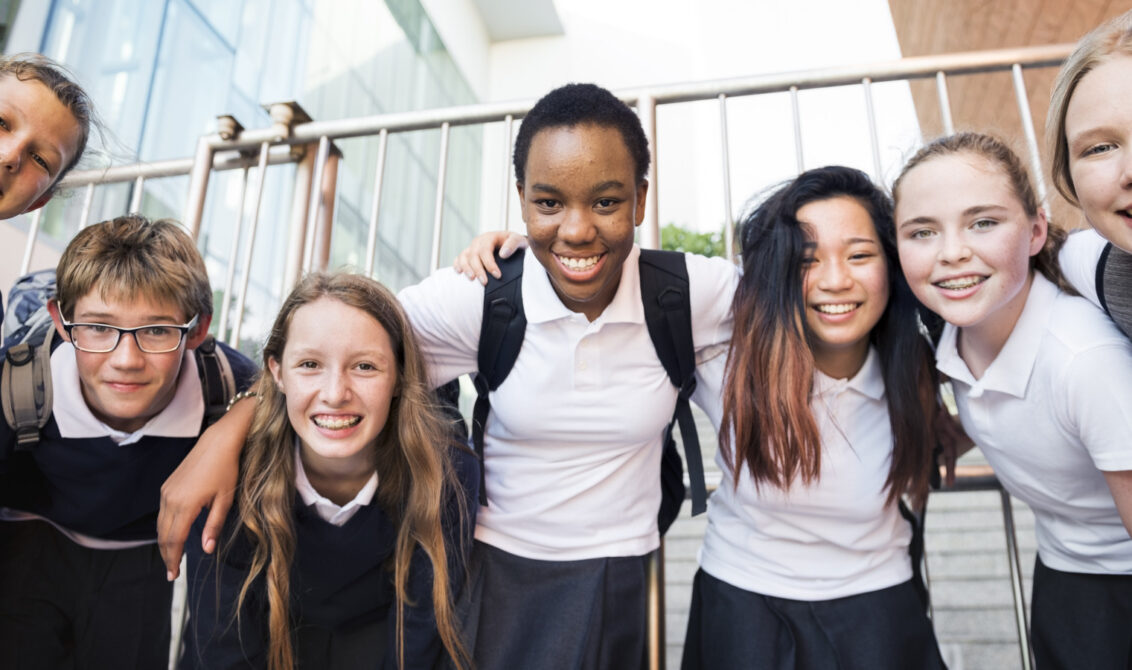
Global citizenship is the belief that people belong to a community beyond that of their home country. In today’s world, where people study, work, and move around on a regular basis, global citizenship is important to celebrate diversity, learn from other cultures, and shape a fairer world now and in the future.
Currently, more than 90% of teachers think that global citizenship should be taught in schools – yet, only 1 in 5 teachers has the resources to do so effectively.
Five ways to foster global citizenship in your classroom
Fortunately, there are some simple, impactful activities to develop students’ understanding of global citizenship and make for engaging, creative lessons. Let’s take a look:
1. ‘Around the world’ story time
One of the best ways to introduce global citizenship to young learners is to have ‘Around the world’ story time sessions. In these, teachers and students can select a range of multicultural books to read together that focus on a variety of places, traditions, and backgrounds. You can then dedicate a certain amount per day or week to explore the book and its themes.
Teachers should encourage students to ask questions along the way and to identify new things that they have been exposed to (for example, a particular landmark or type of clothing). You may also want to incorporate music into the story, playing students a song that connects with the story you’re reading. Likewise, you may want to bring in small, simple phrases from different languages to help children appreciate the linguistic ranges in the world.
Reading diverse stories starts to showcase the different people and lives that coexist, all while highlighting shared experiences between individuals. This activity can start to foster empathy and curiosity among young learners – which are the building blocks for global citizenship.
2. Cultural cuisine adventure
Learning about global citizenship can be combined with a number of subjects. For slightly older children, choose recipes from an array of cuisines that represent different cultures. Aim to use simple dishes that have unique ingredients and cooking techniques that children might not have seen before.
Before getting started, have a conversation about the significance of the food, where it comes from, its history, and how and when people typically eat it. You could also invite a local chef or parent who is an expert in preparing the dish to speak to students about it and help them make it.
Once the dish is complete, encourage children to share the food together and reflect on what stood out to them in the cooking process and how they could make other dishes in the same way. This cultural cuisine adventure is an exciting classroom activity, with the added bonus of increasing students’ exposure to international delicacies, festivals, and customs.
3. Passport to peace
This activity allows primary students to explore places and cultures within the classroom. Each student is given an empty passport booklet to visit different “countries” – classroom stations that represent a country or culture. These stations could have food, books, music, photos, maps, and artefacts that encompass a particular location. As students rotate through the stations, they “stamp” their passports with a memory from that place – for example, with a drawing, a word in the local language, a song lyric, or whatever resonated with them during their time there.
As students move around, you as the teacher should facilitate discussions about any similarities or differences they encounter, and always provide space for questions. The passport activity is a powerful way of enabling students to ask questions and experience cultural beliefs or activities that are new to them. Understanding other areas of the world helps to build tolerance and compassion.
4. Global challenge quest
Some of the most impactful lessons around global citizenship involve looking at real-world issues in students’ local and global community. For secondary students, you could present challenges like poverty, global warming, and access to education, and have conversations about why they exist, what makes them worse, and what solutions are available. You could host one class focusing on international issues, and another that looks at students’ immediate home area.
Students could then work in teams to deep dive into a specific problem and conduct research into existing initiatives and areas for improvement. They then present their findings to the class who can provide feedback about their suggestions.
The global challenge quest cultivates critical thinking, communication, and research skills in students, and ensures that they connect with real people and obstacles in life. It also helps them understand that the most meaningful solutions aren’t developed in silos, they happen with feedback and contributions from others.
5. Model United Nations
Model United Nations involves recreating the UN in your classroom, where students engage in diplomacy, problem-solving, negotiation, and more. Each student is assigned a nation to represent, and has to research the nation’s history, policies, and attitudes towards selected issues (for example, migration, budget allocation, human rights).
Students then participate in a UN-style conference, engaging in debates, drafting legislation, and offering advice to peers based on their nation’s learnings. The role of the teacher is to be the moderator, ensuring that people have equal space and time to speak. The goal isn’t necessarily to reach a shared consensus, but for students to present their points with confidence and understanding. Many of the students who enjoy model United Nations may even go on to be the leaders of tomorrow themselves.
Global citizenship is just as essential to school curriculums as science, maths, and arts. It equips students to thrive in diverse environments, to be open-minded, and to navigate and contribute to a quickly evolving global landscape. With the above activities, all students can be citizens of the world.
Further reading
Learn more about the background and theory of global citizenship in education.
Subscribe to our blog
If you’d like to stay up to date with our latest articles, why not subscribe to our blog? You’ll get a fortnightly roundup of the articles you’ve missed straight to your inbox, plus links to free teaching resources.

